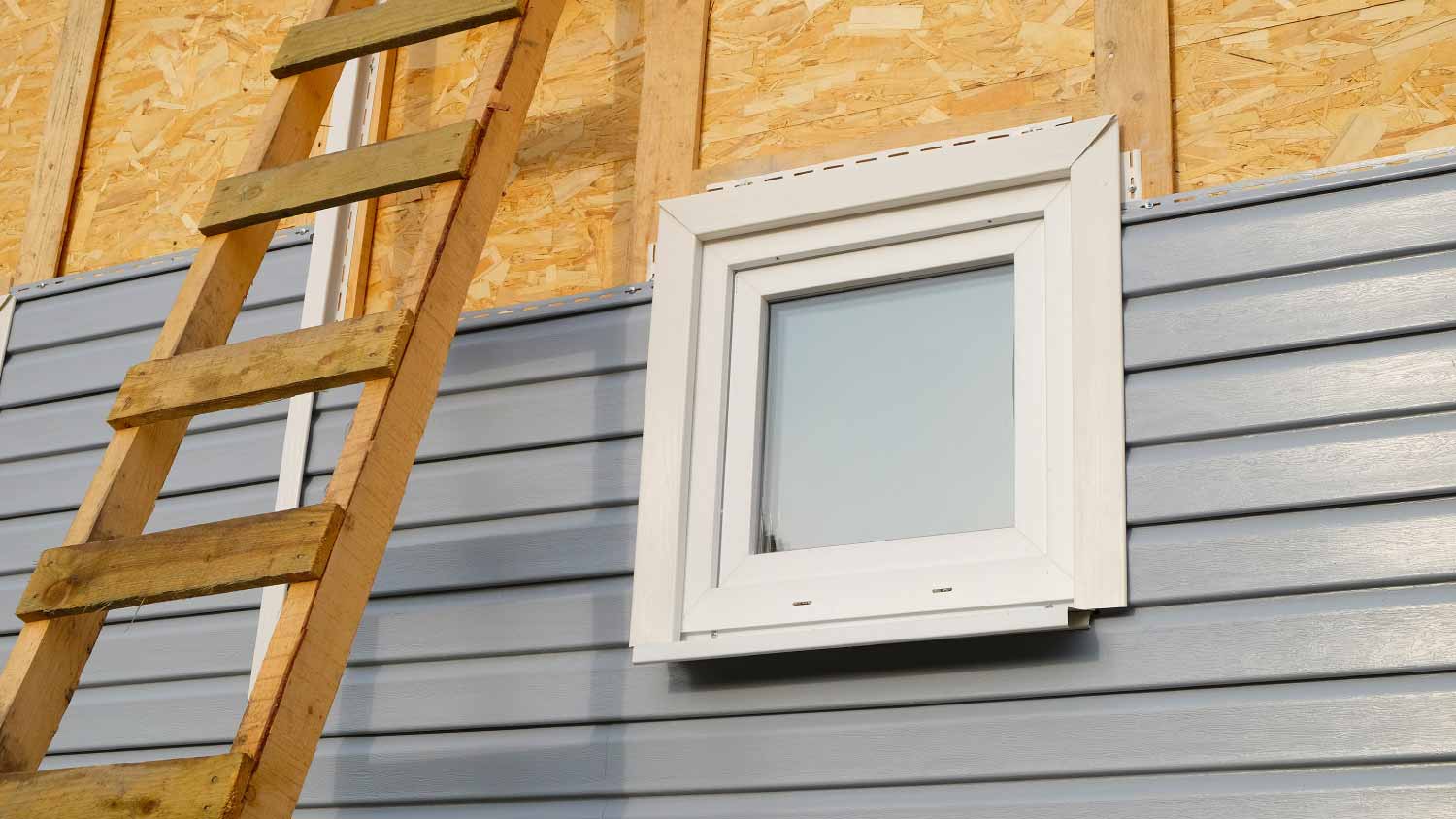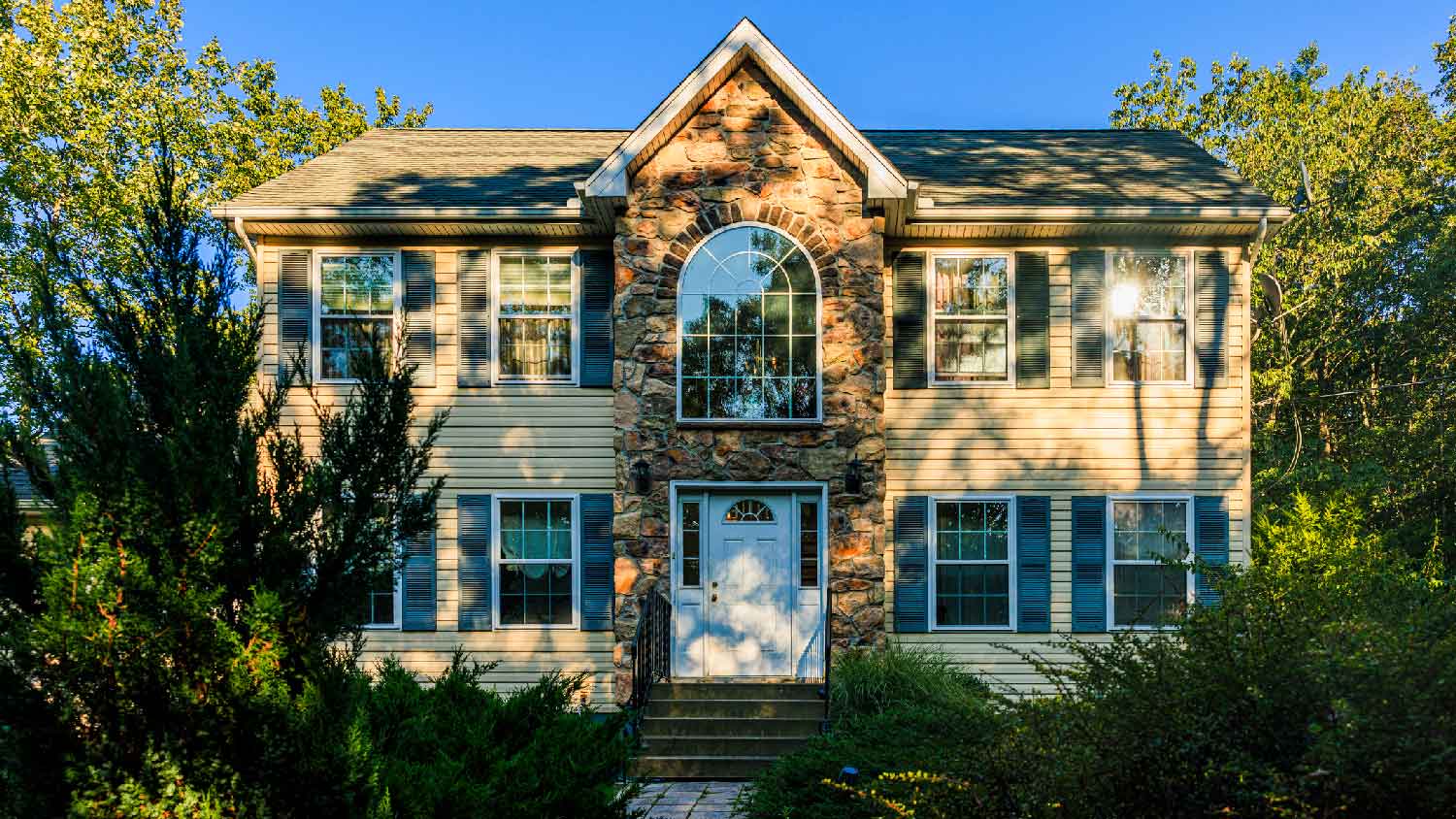
The cost of siding repair varies depending on material, design, and damage. This helpful guide covers the siding repair costs to expect in Columbus, Ohio.
Out with the old and in with the new


Aluminum siding is particularly hearty, lasting 30 years with proper maintenance. However, many homeowners may want to switch out to the original wood or to another type of siding. Removing aluminum siding can be a tedious process, depending on the size of your exterior, but it’s not a difficult one. Here’s a step-by-step guide to get your DIY on and safely get rid of your siding.

Before starting, you have a choice to make that directly impacts the difficulty of this job. Do you want to preserve the pre-existing siding or is it going to the trash heap? Installing aluminum siding costs $4,500 to $19,000 so you may want to keep the pieces intact for re-installation or for sale. Removing and reinstalling your aluminum siding somewhere else on the property is a great way to fix up an old area that has fallen into disrepair, but it requires a vast increase in caution and time as you work. You also have to know how to install aluminum siding to complete the job. If you are trashing the materials, the project finishes much faster. The below steps feature notes on both methods.
Before starting, lay down some drop cloths or plastic. As you work and the siding comes off, so will paint chips and other debris collected throughout the decades. The drop cloths help protect your landscaping from these icky materials. While you are at it, make sure to wear thick work gloves. Aluminum siding pieces are extremely sharp and cause injury if mishandled.
Next, take a peek under a few areas of the siding to see what’s going on. There’s no need for the pry bar yet. Just use your gloved hand and peel back a tiny portion of the corner in two or three spots. There’s a chance, for instance, you may have asbestos siding. If you encounter this type of siding underneath the aluminum, run, don’t walk, and grab a heavy-duty face mask. This will also alert you to any damage to the structure of your home, allowing you to plan later repairs accordingly. If you plan on reusing the siding, giving it away, or selling it, make sure you are gentle during this phase and only peel back a tiny bit at the corner.
Keep those gloves on as aluminum siding is sharper than cheddar. Start removing the interlocking pieces of siding by finding a corner on the outermost edge near the top of the space. Use the siding removal tool and go in underneath the bottom to unhook these interlocking pieces. Once unhooked, gently pull each piece out with your hand if you want to preserve the integrity of the siding pieces. Otherwise, keep at it with the siding removal tool and a pair of pliers, bending at will. Aluminum nails that connect the siding to the original exterior should pull out as you work, but you won’t get all of them at this point.
If you’re removing the entire siding, start from the top and work your way down. If you encounter nails that make removal difficult, get rid of them with the back of a hammer, a pry bar, or those same pliers. Generally speaking, siding pieces are nailed across the top of each piece and the bottom hooks into the piece below it, thus the term “interlocking.”
You likely removed a handful of nails to get the siding pieces off, but there are more nails to remove. Find these nails in the corners resting in little channels that the aluminum slotted into. Pry them using your preferred method. Also, return to any nails that didn’t pull out with the siding. Once finished with this arduous task, run a magnet on the ground to pick up these nails so you don’t step on them later.
In some cases, the exterior trim, soffits, and fascia is wrapped in the aluminum. Open eaves, in particular, are often covered during the original installation and turned into something resembling aluminum soffits. Each panel attaches to the J-channel via a few small nails. Use the claw side of a hammer and yank out these nails and pull the aluminum off. Do the same for any remaining aluminum wrapped around the trim and fascia.

If your siding contractor did a good job back in the day, there should be some insulation nestled between the aluminum and the rest of the exterior. This is typically ½-inch thick styrofoam or another form of rigid insulation. It’s hard to miss and, thankfully, easy to remove. This type of insulation is inherently fragile, so just rip it off with a gloved hand. If the insulation was nailed in with, say, fat headed roofing nails, go over the area with pliers, a hammer, or a nail pry bar.
This is a total DIY-friendly job, even for newbies, so long as you aren’t concerned with protecting the siding. This changes if you plan on re-installing the components in a different part of the home, as the project becomes more time-intensive. For the latter case, consider hiring a local siding contractor. That’s not the only reason to hire a pro, as there’s also the matter of what lies underneath the siding. There’s a high probability these materials will require general repair or extensive maintenance, and a professional contractor handles both, or at least will point you in the right direction. You should also consider a pro if you have a multi-story home, as working on a ladder is always risky for newbies.
From average costs to expert advice, get all the answers you need to get your job done.

The cost of siding repair varies depending on material, design, and damage. This helpful guide covers the siding repair costs to expect in Columbus, Ohio.

Fiber cement siding is durable, fire-resistant, and affordable. Learn more about fiber cement installation costs in Columbus, OH.

New vinyl siding adds value and curb appeal to homes in Columbus, Ohio. Learn about average vinyl siding installation costs in Columbus, Ohio.

Can you put siding over brick? In many cases, yes. Our guide walks you through when and how—and when you shouldn’t.

Confused by the differences between cladding vs. siding? You’re not alone. The terms are used interchangeably, but there are some subtle differences.

It's the age-old siding debate: to caulk or not to caulk Hardie Board. In most cases, Hardie Board discourages caulk use, but it's important to see the whole picture.